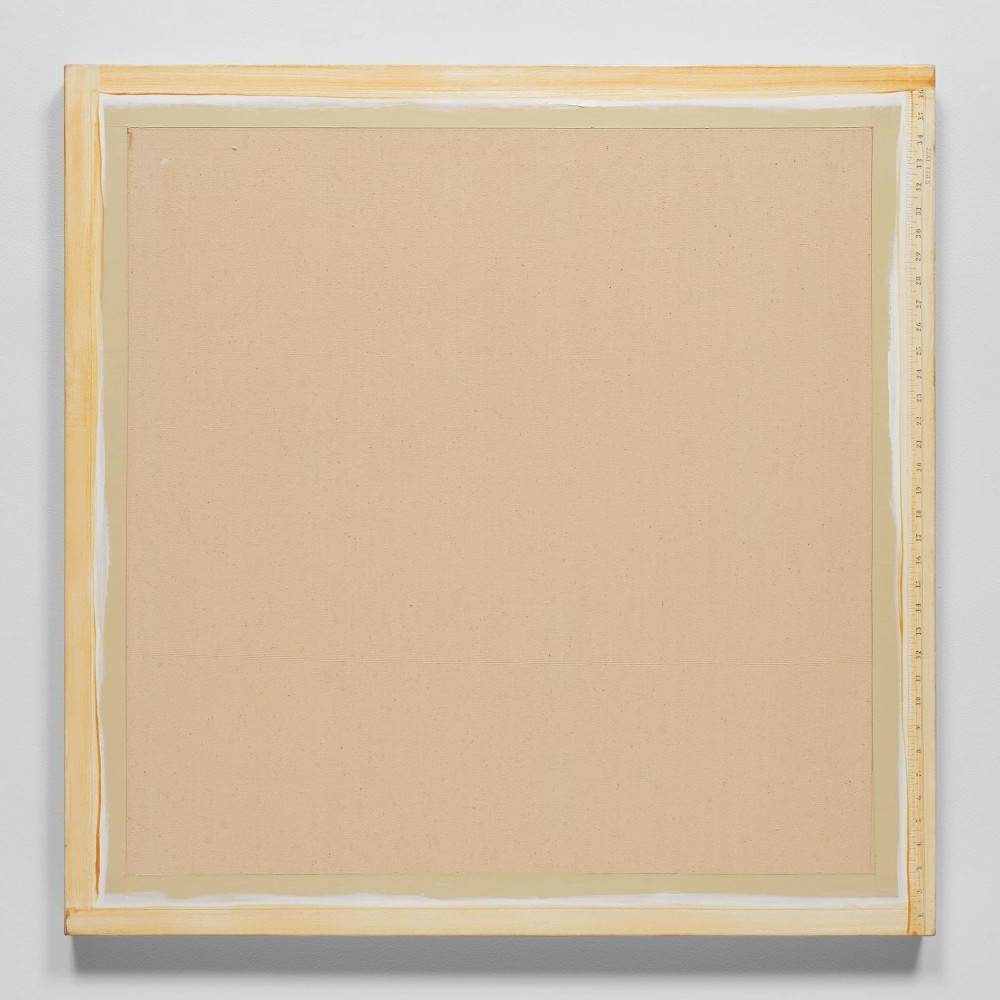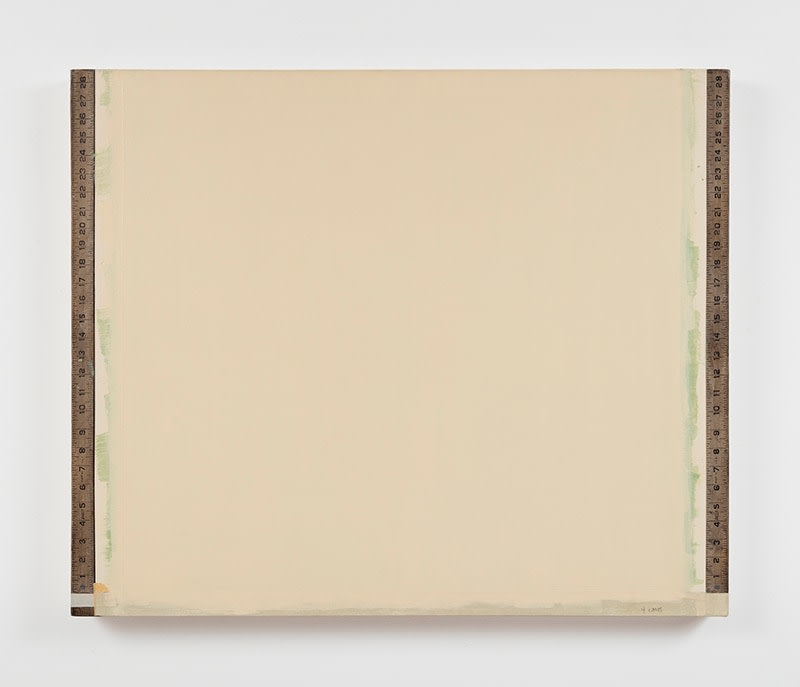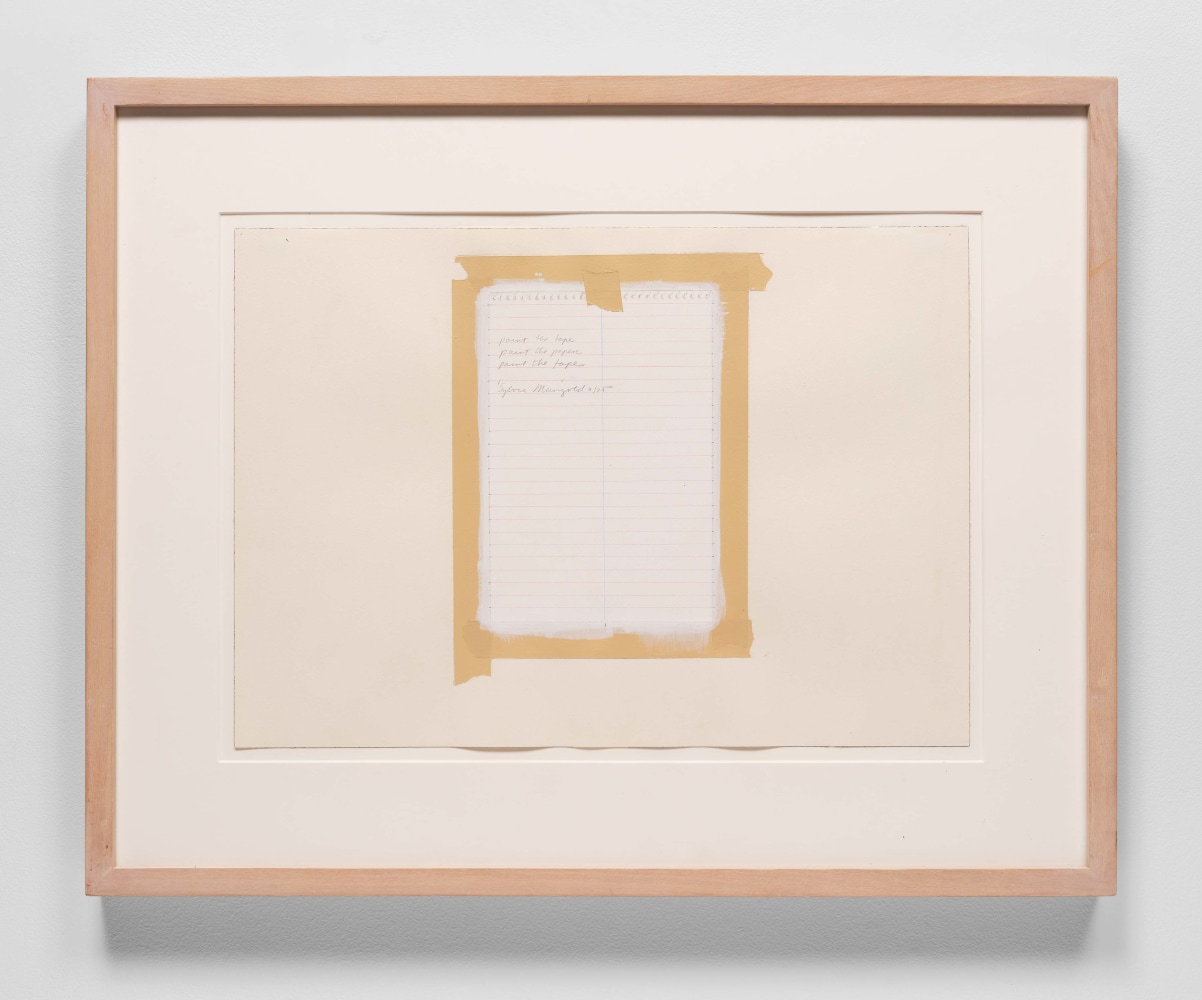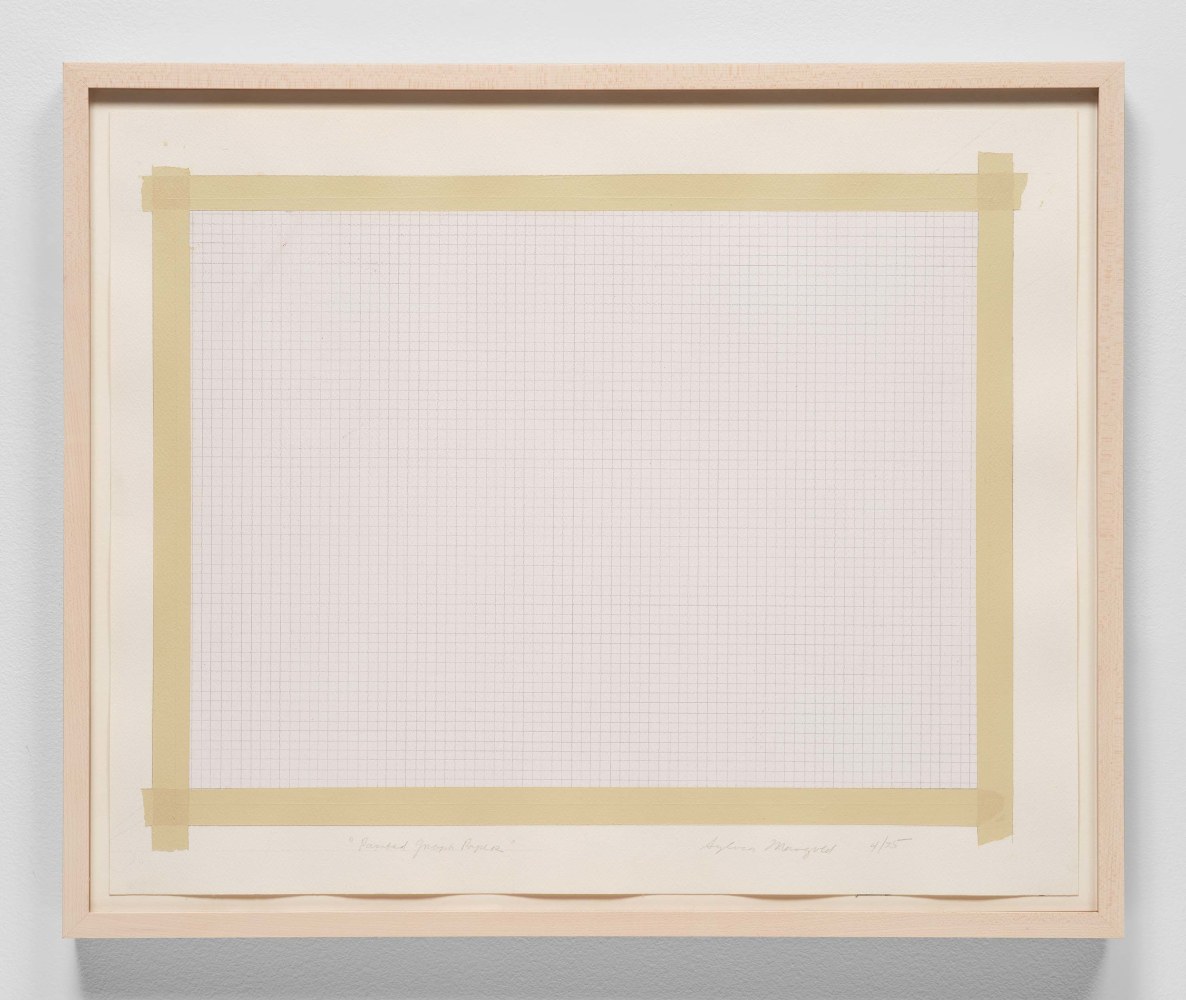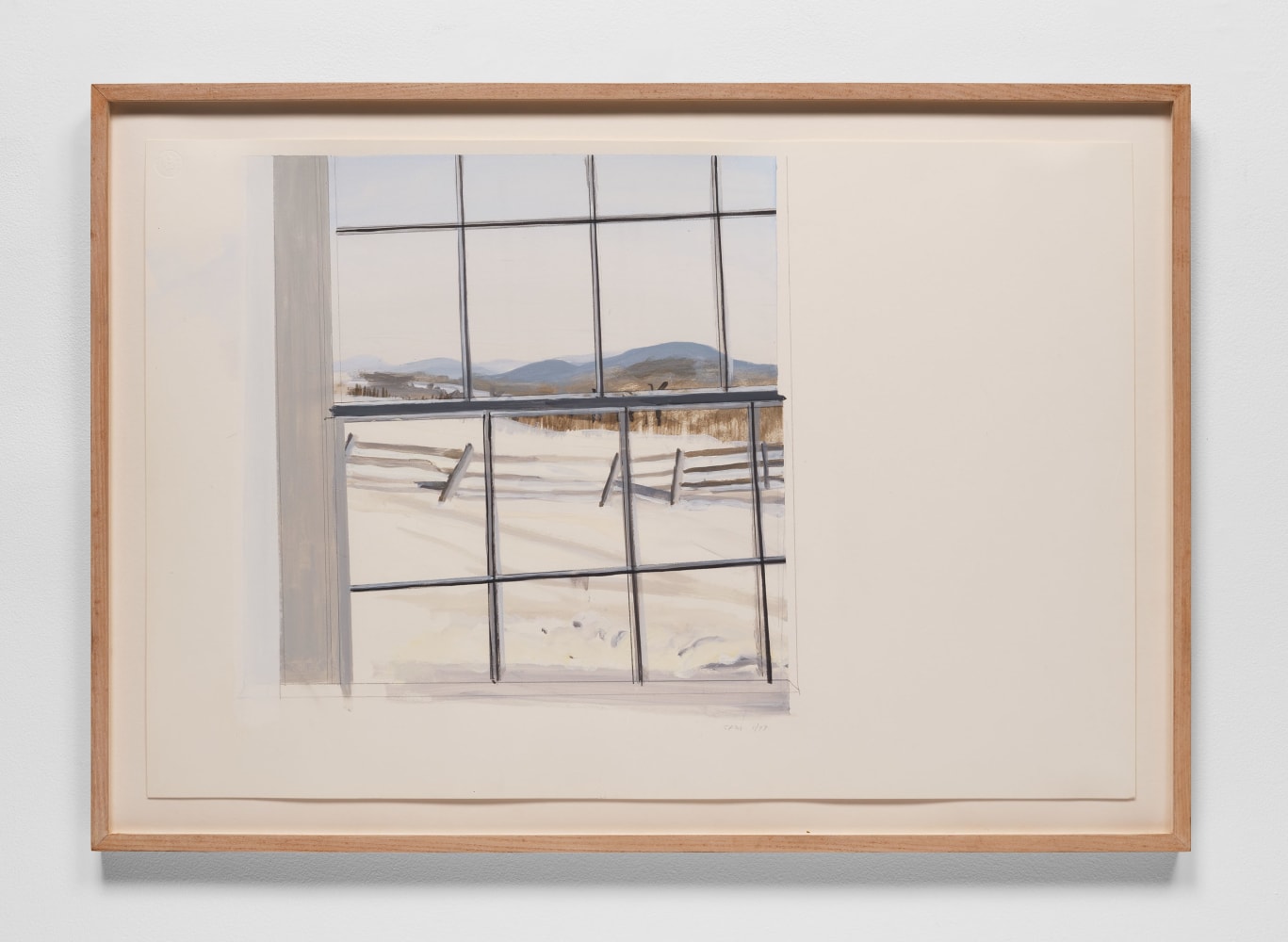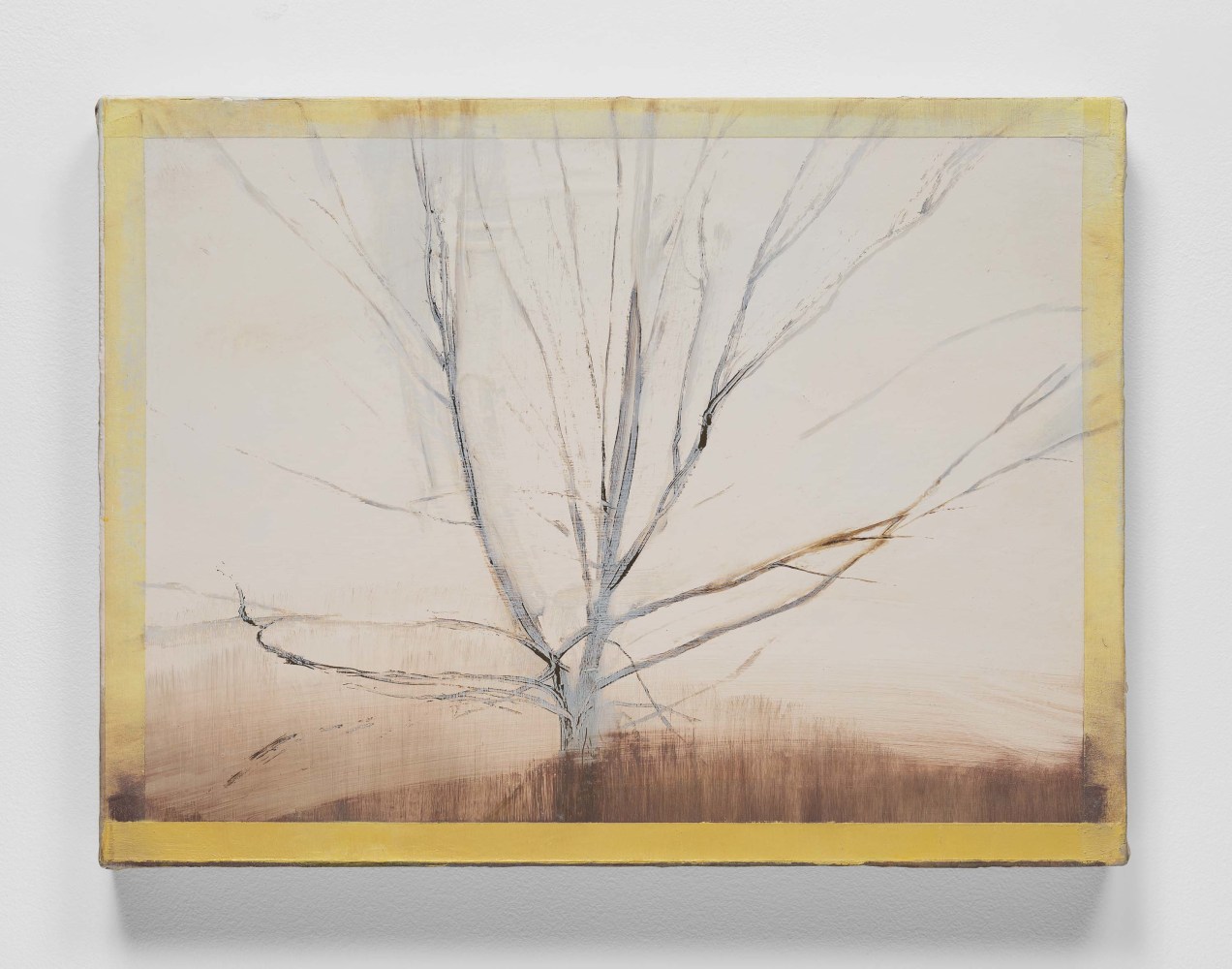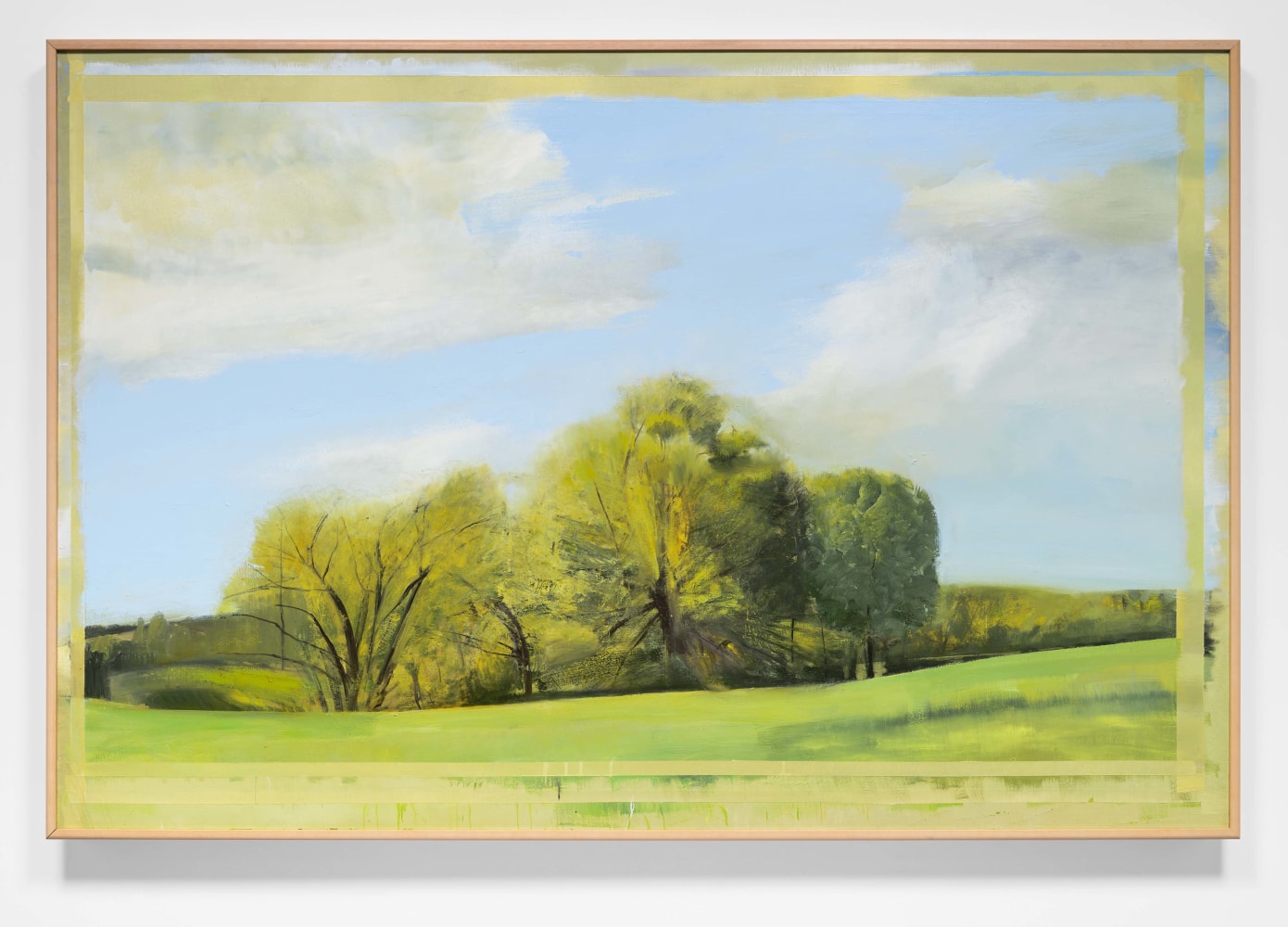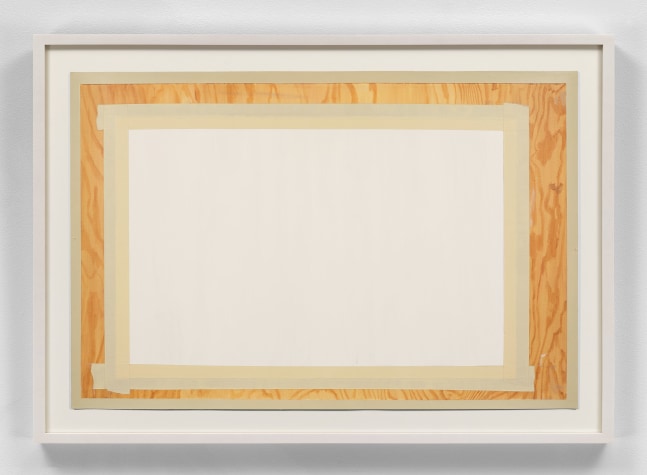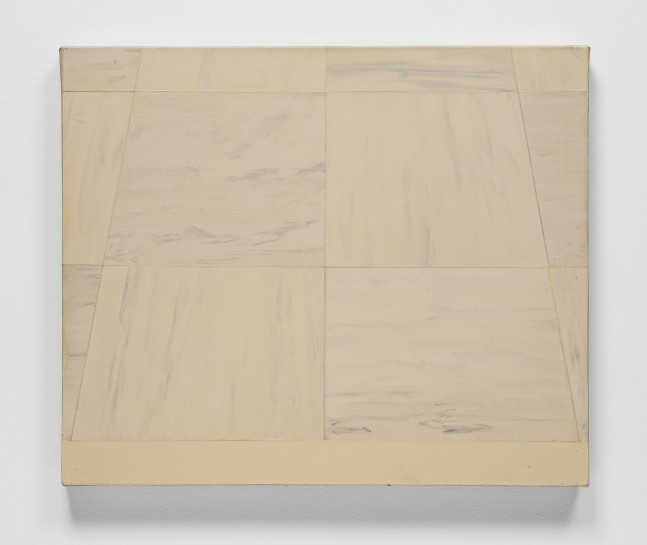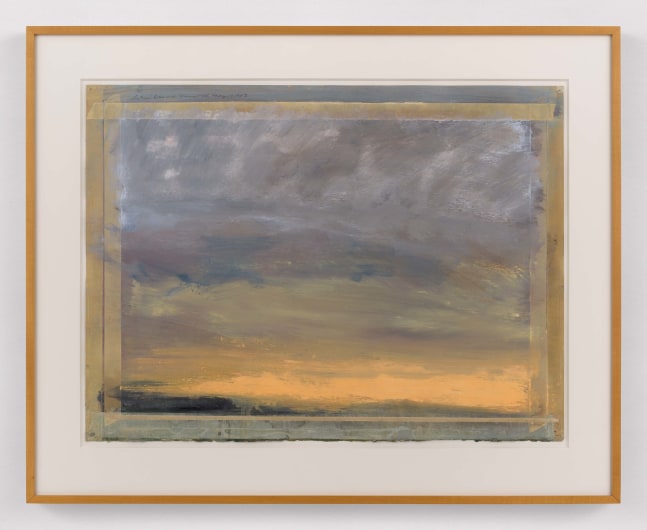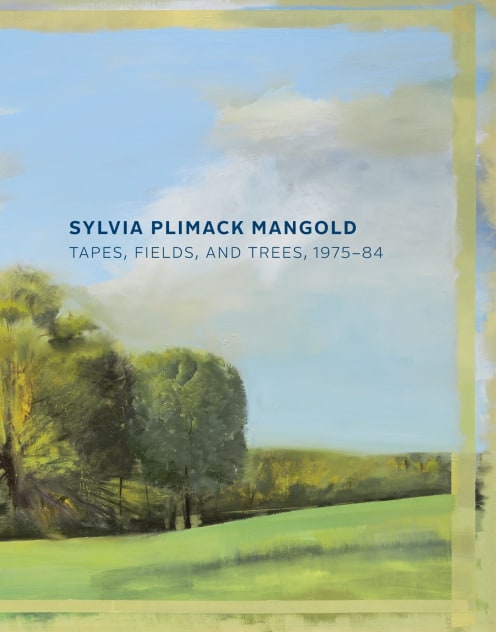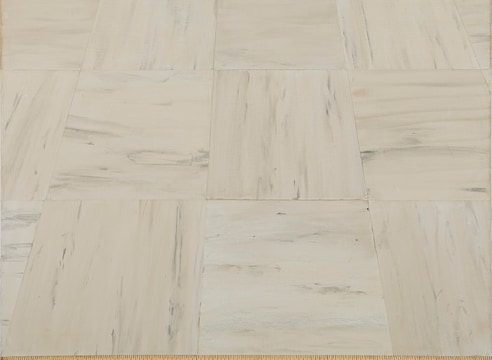
NEW YORK – Craig Starr Gallery is pleased to announce Sylvia Plimack Mangold: Tapes, Fields, and Trees, 1975-84, on view from October 24, 2024, through January 25, 2025.
In the late 1960s and early 1970s, Plimack Mangold developed a distinctive artistic vocabulary, incorporating motifs such as floors, mirrors, rulers, and tiles, drawn from her studio and home surroundings. These motifs were also devices used to construct her work, making the paintings into reflections on the tools and processes of their own making. This body of work was highlighted in Craig Starr Gallery’s 2016 exhibition, Sylvia Plimack Mangold: Floors and Rulers, 1967-76.
The present exhibition focuses on the further development of Plimack Mangold’s practice with the introduction of three new motifs: masking tape, landscapes, and trees. Over the following decade (1975-84), Plimack Mangold used these motifs in a variety of paintings and drawings to continue her investigation of perception and representation.
According to the artist, her introduction of illusionistically painted tape in the mid-1970s came from her desire to further reveal the devices and processes used to construct her pictures. Following her early work, Plimack Mangold turned her attention away from the depiction of objects, such as rulers or tapes, as if they were “observed” inside the painted image, towards the representation of these objects on top of the picture plane, performing the same functions they did in the creation of the picture. “A painted ruler would measure things, the painted tiles would measure space,” Mangold stated at the time, “This was diagramming how one’s perspective determines perception.” Plimack Mangold’s masking tape is not simply a two-dimensional trompe l’oeil image but rather a simulation of real tape made out of acrylic paint, with relief edges and as layers on top of the painted surface.
These works gradually developed into a body of work where the artist focused solely on depicting the materials she used. The illusionary rulers and tapes served to mark or measure the edges of the actual canvas, emphasizing the process behind the creation of the images. The “empty” center fields allowed her to apply paint more freely than before, “Tired of truthful considerations–I am thinking of making selections for pleasure–that is the pleasure of a sensuous surface over a logical one.” These compositions, like the paintings Thirty-Six-Inch Closeness, 1976, and Four Coats, 1976, both on view in this exhibition, function almost as displays that reveal their materials–exposed canvas or paint as paint–and the visual effects–a record of mark making–that form the basis of the painted picture.
The introduction of landscape in 1977 allowed Plimack Mangold to further explore the tension between surface and depth, as well as the relationship of the center fields and the rulers or tapes at the edges. By that time, she came to feel that, in her “empty” field paintings, “The center wasn’t containing itself, it needed something to hold that vacuum, something to focus on.” The landscapes filled this vacuum and produced the illusion of depth, while the tapes and rulers reasserted the flatness of the canvas. Works such as the 1977 painting Big Green (Wadsworth Atheneum, Hartford) play on the multiple meanings of the word “fields”: color fields, natural fields (landscapes), and fields as general space. Through the physical immersion in the surroundings around her studio in Washingtonville, New York, the landscapes also enabled her to turn her attention towards natural phenomena and its effects on color and light. She translated her observations of landscapes into her canvases while preserving her painted tapes as records of different stages in the making of specific pictures, showing her editing and corrections, and emphasizing the inherent artifice of representation itself.
In the early 1980s, Plimack Mangold began to turn away from the broader sweep of her environs to focus on specific individual trees. Regardless of the season, she painted these skeletal trees without their leaves, revealing their armature as if it were human anatomy. Placed within the boundaries of her painted tapes, the trees appear calligraphic and abstract, even while being based on observation. The tapes often stand for the limits of the composition: they sometimes demarcate what is “inside” and “outside” the image. Plimack Mangold also skillfully manipulates the paint to craft the illusion that the tapes are sometimes uneven and transparent, and that they can reveal or conceal what is underneath. She also often paints over them, using the tapes as another surface layer. Illusions within illusions, these works reassert Plimack Mangold’s dedication to representing the underlying structures, materials, and processes of her work, as well as her experience of the natural world.
The show includes ten works with loans from the LeWitt collection, the artist, and various important private collections. This period of the artist’s career has never been the subject of a focused exhibition. These works are shown together for the first time since Plimack Mangold’s last museum retrospective in 1994-96.
A fully illustrated catalogue accompanies the exhibition and includes a new essay by Helen Molesworth, a distinguished writer, podcaster, and curator based in Los Angeles and Provincetown.



